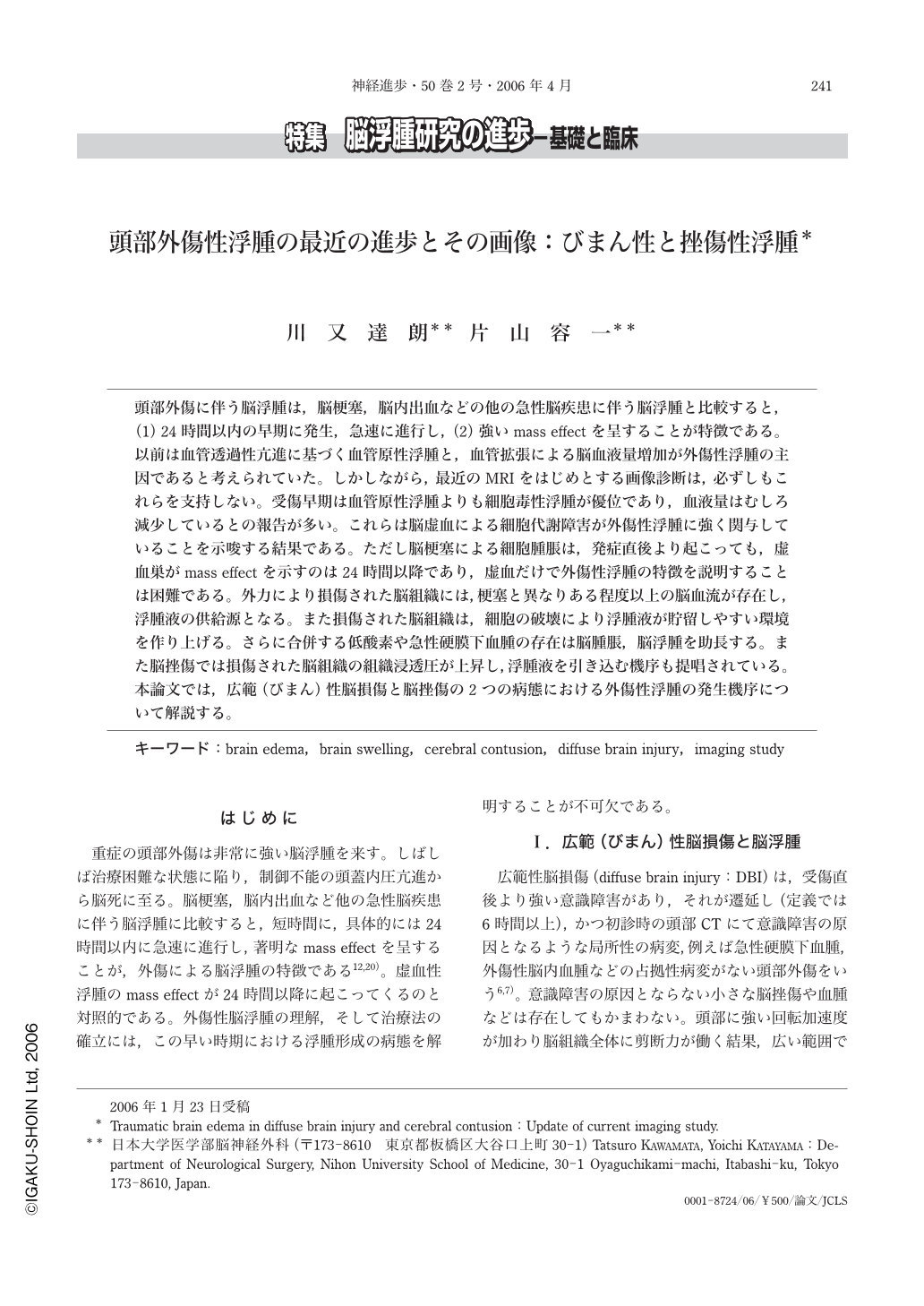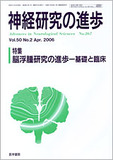Japanese
English
- 有料閲覧
- Abstract 文献概要
- 1ページ目 Look Inside
- 参考文献 Reference
頭部外傷に伴う脳浮腫は,脳梗塞,脳内出血などの他の急性脳疾患に伴う脳浮腫と比較すると,(1)24時間以内の早期に発生,急速に進行し,(2)強いmass effectを呈することが特徴である。以前は血管透過性亢進に基づく血管原性浮腫と,血管拡張による脳血液量増加が外傷性浮腫の主因であると考えられていた。しかしながら,最近のMRIをはじめとする画像診断は,必ずしもこれらを支持しない。受傷早期は血管原性浮腫よりも細胞毒性浮腫が優位であり,血液量はむしろ減少しているとの報告が多い。これらは脳虚血による細胞代謝障害が外傷性浮腫に強く関与していることを示唆する結果である。ただし脳梗塞による細胞腫脹は,発症直後より起こっても,虚血巣がmass effectを示すのは24時間以降であり,虚血だけで外傷性浮腫の特徴を説明することは困難である。外力により損傷された脳組織には,梗塞と異なりある程度以上の脳血流が存在し,浮腫液の供給源となる。また損傷された脳組織は,細胞の破壊により浮腫液が貯留しやすい環境を作り上げる。さらに合併する低酸素や急性硬膜下血腫の存在は脳腫脹,脳浮腫を助長する。また脳挫傷では損傷された脳組織の組織浸透圧が上昇し,浮腫液を引き込む機序も提唱されている。本論文では,広範(びまん)性脳損傷と脳挫傷の2つの病態における外傷性浮腫の発生機序について解説する。
The generally held concept during the past several decades is that traumatic brain swelling is primarily caused by increase in vascular permeability(vasogenic edema)and by increase in cerebral blood volume(CBV)resulting from cerebral vascular engorgement(hyperemia). However the resent imaging studies using CT and/or MRI clearly demonstrate that traumatic brain edema is a combination of vasogenic and cellular with the cellular component predominating, and that CBV is reduced in the most cases with severe brain swelling. Although these results suggest that ischemic brain damage is closely involved in trauma-induced brain edema, the mechanisms underlying the edema formation cannot be fully explained by ischemia alone. Cerebral blood flow decreases but still exists in traumatized brain, suggesting that water supply from the blood vessels in not completely interrupted. In cerebral contusion, diffusion MR imaging demonstrates that cell in the central area of contusion undergo shrinkage, disintegration and homogenization, whereas cellular swelling is predominant in the peripheral area of contusion. It appears that the capacitance for edema fluid accumulation increases in the central area, and edema fluid propagation decreases in the peripheral area. Furthermore, necrotic brain tissue sampled from the central area of contusion demonstrates a very high osmolality, which may generate osmotic potential to attract water. Combination of these circumstances may facilitate edema fluid accumulation in the central area of contusion. This article provides an update of the current progress of imaging study investigating traumatic brain edema in diffuse brain injury and cerebral contusion.

Copyright © 2006, Igaku-Shoin Ltd. All rights reserved.


